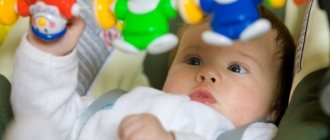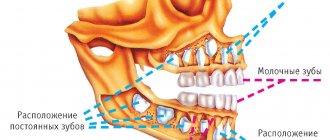- Tags:
- Recommendations from experts
- 7-12 years
- teenager
- child's personality
Many experts believe that modern children reach adolescence much earlier than past generations: not at 13–14, but from 11 to 13 years.
What it means to “be a teenager” is clear to everyone, because every adult has gone through this period. It is from 11 to 13 years of age that parents can still influence the formation of the child’s personality, character and habits. I am a Parent talks about how parents and children can prepare for the “most difficult age”.
What's new in the physical development of a one-year-old child
At 12 months, the child weighs 9.5 – 10.5 kg (±1 kg) and height 74 – 76 kg (±3 cm). The increase in weight and height does not differ significantly from the previous month.
What new things can your little one do at twelve months?
- Walks by hand or independently. But he can continue to actively crawl on all fours.
- A 12-month-old child can grasp two small objects with one hand, and three or a handful with two hands.
- Confidently hands the object to an adult and lets him go. Knows how to grab a button on your clothing using a bent thumb and forefinger.
- Can squat or sit without support.
- He can build a tower from several cubes and put rings on a stick.
- He continues to master gestures, in addition to those that have already been learned (see the child at and months old), he can also: send an air kiss (if you teach him), kiss his mother, blow on something hot.
- At 12 months, the child makes attempts to eat with a spoon on his own, provided that you show him this and allow him to do it himself.
Read in detail: what a 1-year-old child can do
What's new in psychological development
- By the age of one year, a child understands more than 20 words and knows the names of objects that he sees around him every day. The pronunciation of words is still vaguely reminiscent of what it should be, syllables may be rearranged, and not all letters are pronounced. Kids put several meanings into one word;
- A child at 12 months begins to be drawn to other children, but does not yet know how to communicate without conflicts;
- Now the baby understands well how and with whom in the family he can behave. He feels the softness of his mother and allows himself to play pranks or even manipulate her. He knows that this won’t work with dad;
- By the age of 12 months, it becomes more and more difficult to play with a child; he may set some of his own rules in games that are not acceptable to you and persist in doing what he should not do: throw sand, pull the cat’s tail;
- Children around this age begin to develop long-term memory. Kids can remember what happened yesterday or a few days ago. There are people who, already as adults, are able to remember themselves at one year old;
- When a child listens to music, he tries to sing along, and while standing, he tries to dance;
- Fulfills simple requests (see child at 11 months);
- Starting approximately from the 9th month, but most often at one year, children may experience a difficult transitional moment, when they seem to become different from themselves and change radically - this is the crisis of the first year. How it manifests itself: Disobedience, stubbornness;
- A sharp increase in independence (refusal of help);
- Touchiness and tearfulness;
- Conflicting behavior (the child may get irritated when something doesn’t work out and expect help from you, but immediately refuse it).
Any mother has questions: why did the child start to behave this way? What is this: harmfulness or did I spoil him? Don't worry too much or react violently to changes. Here are the reasons why your baby’s behavior changes:
- The child gradually develops a will, which increasingly begins to collide with the will of an adult, which causes a protest on the part of the child;
- From the age of 12 months, a child’s worldview changes completely: he realizes the first signs that he is a separate person, that his parents are adults who are allowed more than him;
- As the child acquires more and more skills, his self-confidence grows and he becomes more and more independent. At the same time, the baby cannot yet adequately assess its capabilities, distribute power, or anticipate the situation. Therefore, the child seems to overestimate himself and because of this suffers failures, which, of course, drive him crazy. The child cannot accept the thought: “that he cannot do what he wants, because his mother can do it”;
- Prohibitions are perceived by the child as an obstacle to adults’ understanding of the world.
Child development test at 12 months
- The child should already be able to crawl, stand with support and take a few steps if you hold him by the arms;
- At 12 months should use 1 – 2 gestures: wave a hand, nod “yes” or “no”;
- Must say at least one meaningful word: mom, dad;
- Must be able to fulfill simple requests: give, take;
- In addition, skills acquired in previous months must be present (see child at 10 and 11 months);
- By the end of the first year, the child should have at least one tooth or swollen gums - evidence that the tooth is growing.
If the result is negative for at least one of the test points, then you should definitely visit a pediatrician.
Signs of adolescence in girls
The transitional age in girls has its own signs that indicate a difficult period has come, and do not consider this as spoiling, whims and a desire to annoy them. Thanks to enhanced hormonal development, primary and secondary sexual characteristics appear, which, if there are errors in interaction with the environment, can develop not into personality development, but into the formation of complexes.
Girls, on the one hand, look at beautiful women, they want to be like them, to match their figure and so on, but changes (and rapid ones) in their own body are difficult to accept. Problems with the skin are especially pronounced, usually manifested by rashes, the structure of the hair changes (it becomes oily, dull, falls out), and menstruation begins. Growth is activated - children stretch up to fifteen centimeters per year. This becomes noticeable both in clothing and in awkward posture and gait, since the body is not yet accustomed to moving organically in such a large body. Body weight also increases, and being exposed to diets and the promotion of role models, many may begin to make dietary changes.
In addition to such changes, signs of the onset of adolescence in girls may include characterological changes, namely the appearance of stubbornness, maximalism and sudden mood swings, while the stages of desperate communication with everyone can be replaced by complete isolation and withdrawal into the world of alternative reality. These are the first signs that are directly related to hormonal changes and are beyond the girl’s control, but a desire to stand out by any means may also appear. This is an application for recognition of one’s own individuality, when effective and harmonious models for receiving society’s attention have not yet been formed. Child and adult types of reactions are combined - the desire to quickly attract attention by any means (children) and the use of aggressive and resistant tendencies for this (adult).
Based on changes in her own external appearance, the girl changes her eating behavior or shifts the emphasis in previously present values, which is more often associated with the development of complexes and subsequent depression or attempts to return to the previous state and the activation of anorexic patterns. Close attention to appearance is not due to narcissism, but to constant comparison of oneself with yesterday’s image, the search for new changes and attempts to somehow regulate them.
Mode: sleep and nutrition
Parents of many one-year-old children are faced with a change in routine. We have to do this because now it becomes difficult to put the child to bed during the day at the same time, so daytime sleep has to be pushed back. This is how “night owls” manifest themselves, who wake up in the morning at 9–10 o’clock and go to bed at 14–15 o’clock in the afternoon. Thus, it turns out that such children begin to sleep during the day once for 2–3 hours, from about 14 to 17 hours, and their night sleep begins only at 22 hours or even later.
In this regard, it is necessary to accustom the baby to a different diet. If the child switches to one long nap during the day, then feeding him five times will not work. Such kids eat 4 times, for example: breakfast at 9.00, lunch at 13.00, afternoon snack at 17.00 and dinner at 21.00.
If your baby’s routine has not changed, then everything remains the same. (see child at 11 months)
Read also: 1-year-old child’s daily routine
Physiological changes
Adolescence begins in girls with physiological changes, which are the causes of further behavioral and emotional changes. The child’s body, having received a huge dose of hormones, begins to transform into a female body and form the organs and features necessary for childbearing. The whole figure changes, acquiring feminine contours due to the expansion of the pelvic bones, enlargement of the buttocks and roundness of the hips. Such a change is necessary for bearing a fetus, and for attracting adult males, since it is precisely this type of female figure that is perceived as genetically attractive - on an instinctive level, a normal man does not react to teenage and children’s equally elongated bodies.
Breast formation occurs not only in terms of its enlargement (for many, this problem is also associated with shame and inconvenience), but the pigmentation of the nipples also changes, becoming more visible, they begin to swell and protrude. Along with the formation of the breast, a change in the hairline occurs - it appears in the intimate area and under the armpits, becoming more noticeable on the limbs and on the face. The changes can be significant (arms, mid-abdomen, sideburns) or practically unnoticeable (only the pubis and armpits) - there are no standards for the number and speed of changes. The fat layer increases, due to which the figure is rounded, but many girls perceive this as overweight and may try to lose weight.
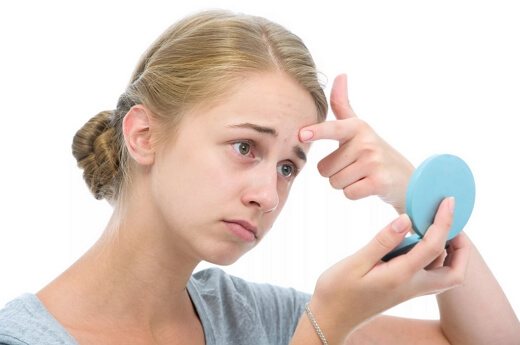
Other changes are also noticeable - skin and hair become oily and problematic, sweating increases. Due to the fact that the hormonal and endocrine systems are working at maximum, new difficulties arise with body odor and unsatisfactory appearance. If during such a period a girl is left without support or an inaccurate remark hurts her already unstable self-esteem, then adolescence will turn into a crisis, with possible variants of depression up to suicidal attempts.
Menstruation begins, the nature of which is not constant, but within a few years by the time the girl reaches adolescence, the girl has already formed her own cycle. You can talk about problems only if there is no onset by the age of sixteen or the nature of the course is very strange - here it is better not to focus on the norms described on the Internet, but to consult a gynecologist. Pressure surges, pain, tingling, fainting, weakness are possible, because... the formation of the vascular system does not keep pace with the growth of the entire body and the heart places additional stress.
How to help your child develop
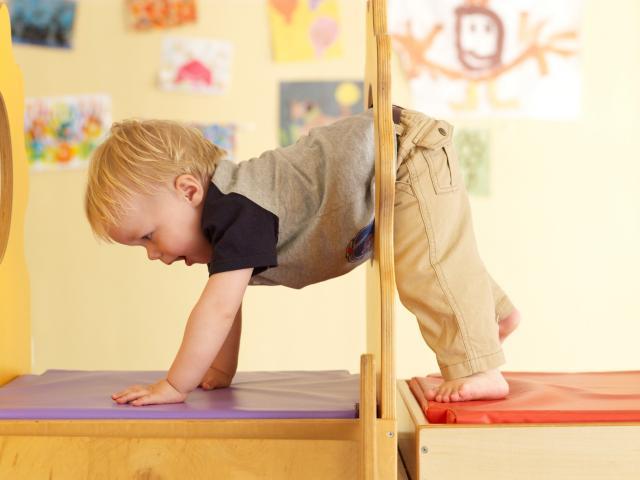
- Continue to carry your baby in your arms periodically. (see “holding” a child at 10 months);
- The development of a one-year-old child is still aimed at improving speech and fine motor skills, so continue activities that develop these functions. (see child at 10 and 11 months);
- The most important skill that your baby is now acquiring is walking. No matter how much you want your child to start walking, it is important that he is ready for this. If the baby has mastered crawling and moves easily, then you can encourage him to start walking, but there is no need to wean him off crawling. To do this: Place your baby's favorite toys at an accessible height. As soon as you notice that the child has stood up and is reaching for the object, move it a little further away from him so that the baby takes a few steps towards the target. Don’t rush your baby; the musculoskeletal system gradually gets used to the new loads. Increase the distance gradually;
- When the child learns to take several steps on his own from support to support, create for him several such goals in the form of toys. Let the baby move from one support to another: from a chair to a crib, from a crib to a chair;
- Very often, a child is prevented from taking the first step by a feeling of uncertainty and fear of losing balance. Give him a toy for balance, step back a couple of steps and ask him to bring you the object. For many children, this is enough to dare to walk on their own;
- When you go for a walk with your child, pay his attention to other children who are already walking. Someone else's example is contagious;
- Do not overuse walkers, they can create incorrect posture (FOR and CONS of walkers). It is better to use rolling toys or reins. Support your baby by the forearms or hands, but not by the armpits. When the baby can take several steps on his own, you can belay him from behind, supporting him by the hood. Now try to use the stroller less;
- Falls are an important part of learning to walk. Do not rush to him immediately after falling; let the baby try to get up on his own. Help if the child really cannot get up or hits himself and starts crying;
- If you have somewhere to walk on grass, on sand, or just on the ground, then it will be useful to let your child walk barefoot. A baby should be taught to walk on a hard floor only in special children's shoes. The reason is that when walking, certain muscle groups in the foot are tensed, which only happens when moving on natural surfaces (earth, sand, pebbles). When a child walks on a hard floor, the foot is relaxed or not fully tense, which leads to various disorders in the gait and ankle. It should be noted that the first shoes should not be just slippers or elegant sandals, but orthopedic correct shoes. It is advisable that they be lace-up and with a high back - for stable fixation of the ankle and with a 5 mm heel - to prevent flat feet. Of course, you don’t need to keep your child in shoes all the time, but when the baby learns to walk, put them on.
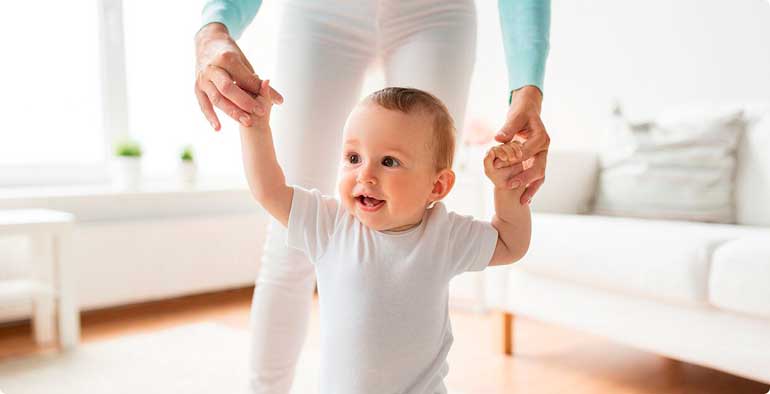
Read also: 10 ways to teach a child to walk
Games
Play story games with your children: everything you saw on a walk can be played out at home with the help of toys, for example: you watched a truck unload a body. You can repeat this at home with a children's car and cubes. Or arrange fairy tale performances for your child using a children's finger theater or matryoshka dolls in the form of fairy tale characters.
It's time to rebuild your relationship with your child. Organize your games and activities with him so that they take place together, but at the same time you allow the baby to independently do what he knows. There must be sincere trust between you and the child, only in this case the baby will be able to learn from you and develop fully.
← 11 month
Psychological problems
In addition to the fact that adolescence brings physiological changes to a girl, many internal, personal aspects also change. Both the girl herself and her parents begin to notice that the style of interaction and attitude towards themselves is changing (self-esteem falls and criticism increases) and towards others (the world is perceived dichotomously, and adults, as misunderstanding people, do not understand what the girl is facing). Appearance suddenly becomes important due to puberty, and appearance as a way of attracting the attention of guys turns out to be extremely important. Against the backdrop of a constantly changing body, disruptions in hormonal and other regimes, the perception of one’s appearance is far from favorable. All the comments of adults that youth is beautiful are always not perceived or can be seriously criticized, because the girl herself remembers her skin, which did not bring problems before, and her body does not smell bad.
At this age, the first stages of many years of separation from parents begin, the need to show society one’s individuality, to become noticeable and attractive. Experiments begin in appearance with cosmetics and clothing, where the main thing is brightness and unusualness instead of emphasizing beauty and advantages. This is due to the lack of experience in choosing an image on your own and the fact that it is better to look intimidating and ridiculous, but noticeable and recognizable, than to be invisible. What hits self-esteem the hardest is not the fear and hostility of others, but not the perception, the lack of desire to take into account her opinion.
The transitional age in girls is distinguished by two main features - maximalism and vulnerability. It is they who do not allow the girl to get along calmly with others, because having such a position, friends should be eternal and always support, parents should understand, and appearance should be ideal. If such a person receives even one reprimand, it is comparable to a cut on fresh, thin skin and leads to personal frustration. Inflated expectations are presented to the whole world, but one’s own dreams about ideal relationships, work, etc. become so strong and important that anyone who questions their existence can be excluded from life.

A separate point for teenage girls is the experience of falling in love for the first time, comparable to the collapse of existentiality. In many ways, this is a female initiation, when a collision with reality occurs, any features are noticed in a partner, not just the ideality of the image, and relationships are the place where you need to work, and not live like in a movie. Lack of experience in intergender interaction always leads to the fact that the first relationship either collapses or remains non-reciprocal.
How long does puberty last for girls?
The onset of psychosomatic changes is determined by the general rate of maturation of not only genetically determined physiological aspects, but also important mental structures. It is the formation of thought, cognitive and emotional patterns that provide the opportunity to move to the next stage of development.
In the shortest possible time, the adolescent’s body is faced with the task of transforming an unformed child into an adult. In girls, these changes begin earlier (in the earliest cases, around nine years of age; in later stages of development of the entire personality, this can begin around eleven years of age). The rate of formation of new organ systems, new models of response interaction is individual in each case, and the course of the transition crisis cannot be predicted in advance. The transitional age for girls ends around eighteen years old, but can last up to twenty (infantilization, developmental delays, upbringing errors, negative influence of the environment).
Changes in the development of children with each generation make it necessary to take into account the acceleration of this process, so what parents needed four years to do now takes half as long. If we judge by the modern generation, then they will pass the teenage crisis no longer according to the normative standards that were relevant and described before. A year is enough for physiological formation and another year for the psychological adaptation of the body to a new type of existence.
Reducing psychological problems, breakdowns and emotionally unstable states bordering on affective outbursts, due to the fact that recent generations are less focused on gender issues and pay more attention to personal development. This is a new type of people who have been undergoing evolutionary formation for a long time, who have overcome the instincts of reproduction and survival, ceasing to concentrate on this and subjecting their behavior to the influence of hormones. The transitional age, as a separate crisis stage, may even completely disappear after the mind finally begins to prevail over the influence of puberty.
As a conclusion
The main goals of parents, especially mothers, during puberty are:
- teach the girl to accept herself as she is;
- convey all knowledge regarding sexual techniques, contraception and methods of protection against sexually transmitted infections;
- show all the beauty of a woman, mother, wife;
- determine the boundaries of decent behavior with the opposite sex;
- teach how to cope with some ailments associated with premenstrual syndrome, thrush, etc.;
- surround your child with love and care, especially when he needs it.
Of course, just like a child, you also grow up. Do not forget that the child has never been an adult, and you, adults, have already experienced all the hardships of this difficult period. How your child perceives everything depends largely on you.
Baby's nutrition at 12 months
A sippy cup, a safe fork, and a light mug are items that a child should receive at the age of one year. There is no longer any need to give all food in the form of purees - if the baby has teeth, there should be small pieces in the food so that he can chew them. Number of meals: 4-5. The interval is no more than 4 hours.
The diet should contain:
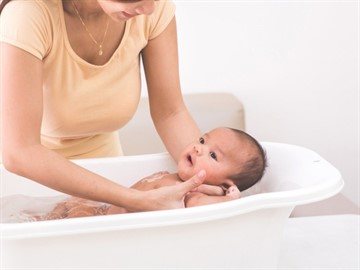
- meat. As before, the most preferred are rabbit, turkey, veal, and chicken. At one year old, you can offer your baby steamed cutlets, meatballs, soufflé;
- fish. You need to choose low-fat varieties. Fish is offered 2 times a week;
- dairy products (350-400 ml per day). These are cottage cheese, yoghurts, kefir, etc. Porridge is prepared with milk;
- at this age, you can accustom your baby to baked goods, but they need to be introduced into the diet gradually and carefully;
- Vegetables and fruits a year provide a variety of vegetables - potatoes, all types of cabbage, pumpkin, carrots, bananas, pears and others. They can be given raw or baked;
- you can introduce pasta, preferably from soft wheat varieties;
- greens are another healthy product for young children;
- compote, jelly, fruit juice, fruit drink, herbal tea are permitted drinks.
Vegetables and fruits should be local and seasonal. Any exotic or tomatoes and cucumbers in winter will do more harm than good. It is worth remembering that they can cause poisoning or an acute allergic reaction.
Depression in adolescence
Adolescent depression deserves special attention - conditions in which a teenager feels depressed, sees the world in black, becomes slow, and sometimes even apathetic. During depression, a teenager may have thoughts of suicide, which, unfortunately, sometimes come true.
If a teenager often looks sad, speaks in a quiet voice, begins to do poorly at school, and withdraws from communication with peers, this is a cause for concern.
Parents need to create a trusting environment at home and find out what led their daughter to this state. At the same time, it is important to accept your child for who he is and help him cope with depression. To do this, it is important to raise the child’s self-esteem and support him. You must always be ready to listen and understand his feelings, and also teach him how to cope with his problems. In some cases, specialist help may be needed.


